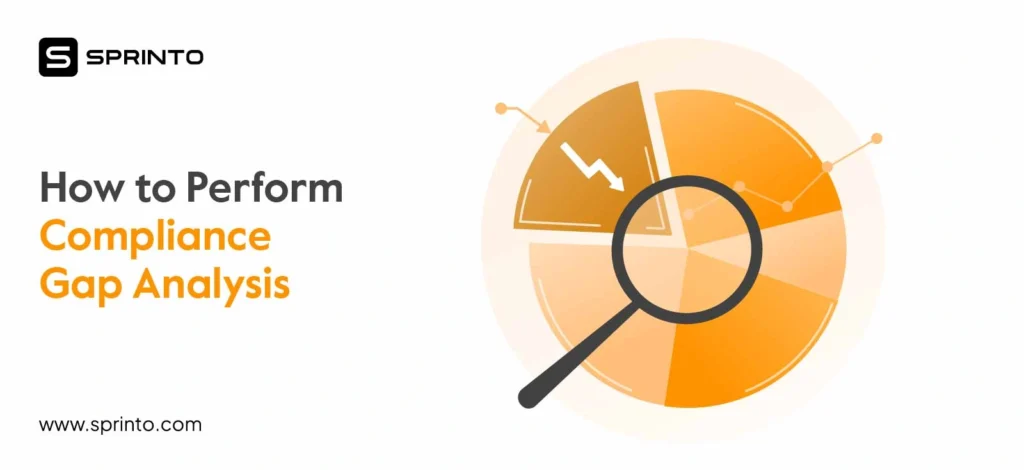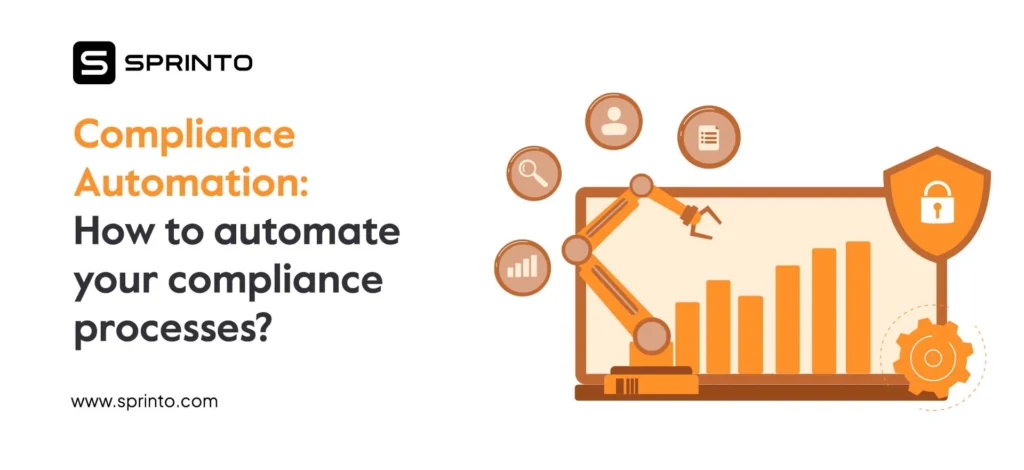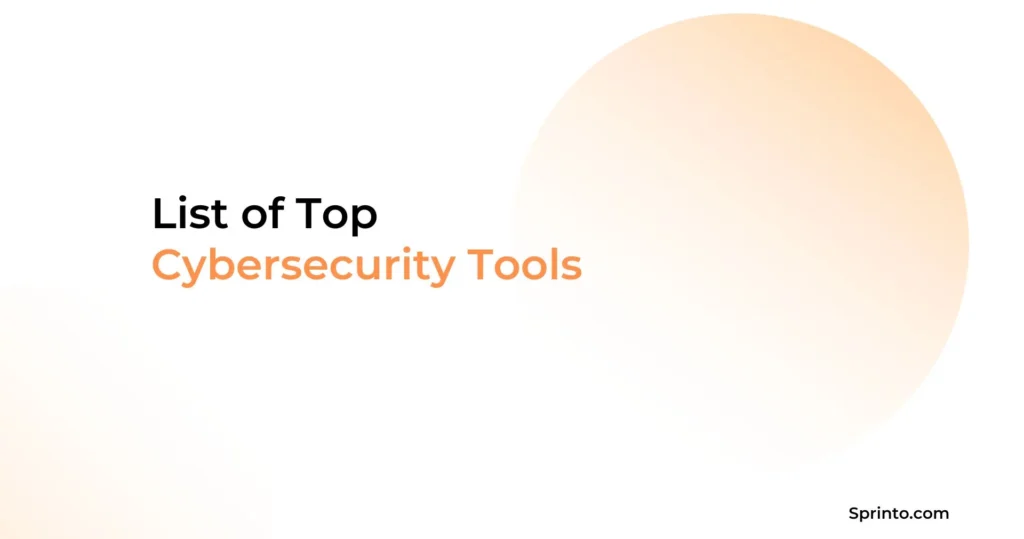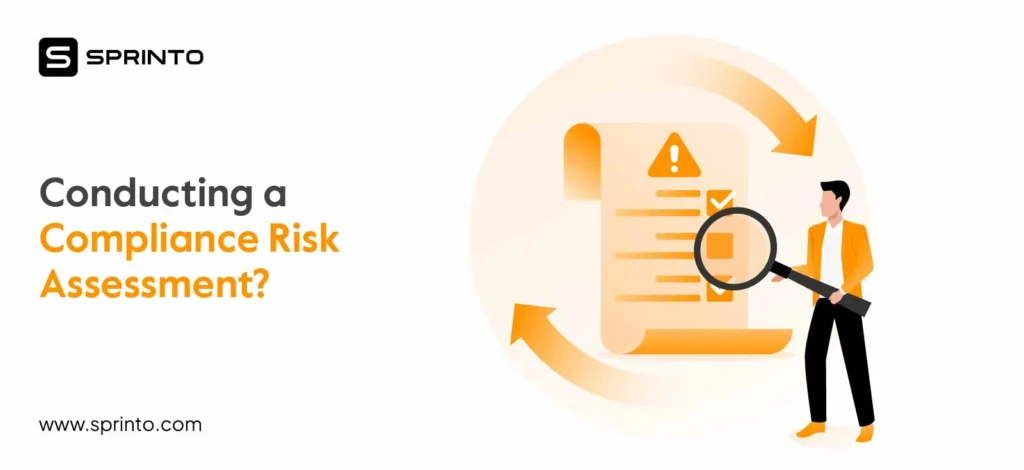Security compliance isn’t optional anymore. If a potential customer asks for your SOC 2 report or ISO 27001 plan, the deal might pause until you can show it. That’s often when teams realize they need to get compliant as soon as possible.
Often, the solution demands adopting tools that help prepare for compliance audits. One such tool is Oneleet: a platform that handles audits, sets up controls, tracks access, collects evidence, and more. A dedicated security lead stays involved to guide setup, review risk posture, and manage auditor communication.
Oneleet’s support layer may feel excessive if a business is already conducting internal audits and managing access through tools like Okta or AWS IAM. In those cases, a leaner platform with tighter integrations and more direct control fits better and costs less.
| TL;DR Oneleet is a compliance platform tailored for startups to manage SOC 2, ISO 27001, HIPAA, and PCI audits through integrated security operations and expert support. Limitations include limited integration range, rigid bundled services, and lack of customization for advanced users. Common alternatives include Sprinto, Drata, Vanta, Secureframe, and Thoropass, each offering more flexibility or deeper technical coverage. |
What is Oneleet?
Oneleet is a cybersecurity platform that helps build, manage, and monitor cybersecurity programs through penetration testing services. It also acts as a compliance platform built around security expertise that helps SaaS companies achieve certifications like SOC 2, ISO 27001, HIPAA, PCI DSS, and GDPR.
The automation and hands-on support from security engineers includes manual pentests and a dedicated compliance lead who manages your audit journey, end-to-end.
Ideal User Profile
Oneleet is particularly useful when you need to prove compliance quickly but lack the in-house bandwidth to run it. It is best suited for teams under 200 employees without a dedicated GRC lead, where security sits with the CTO or DevOps. If a deal depends on passing SOC 2, ISO 27001, HIPAA, or PCI, then Oneleet helps offload audits, evidence, and policy prep.
What are the key features of Oneleet?
Let’s explore the range of features that Oneleet offers and the value it translates to for business users.
1. Control assignment with audit context
Teams using Oneleet can break down each control in SOC 2 or ISO 27001 into specific tasks with ownership, deadlines, and documentation expectations. As a result, audit reviews remain on track because auditors get direct visibility into which systems the team has covered, what evidence supports each control, and who approved it.
2. Access visibility and privilege review
Oneleet connects with systems like AWS, GCP, GitHub, and M365 to reflect the current access data. Such integration notifies of unused accounts, missing MFA, and overprivileged roles that breach compliance controls.
It is possible to even highlight least privilege and access review practices — two key areas that auditors frequently identify as areas for improvement.
3. Auditor interaction and evidence routing
Teams can benefit from the platform by organizing and submitting evidence directly to auditors. The tool extends the support for tagging controls, attaching artifacts, and managing auditor Q&A in a single location. As a result, there’s less back-and-forth during audits which helps prevent last-minute documentation stress.
4. Slack-based compliance reminders
Oneleet sends time-sensitive tasks, such as access reviews and evidence sign-offs, directly to Slack. Team responses are instantly logged as audit trail entries, eliminating the need to revisit the dashboard for review. It helps teams stay on track with compliance audits, improving task turnaround and reducing missed deadlines without adding yet another tool to their workflow.
5. Policy templates based on frameworks
Oneleet provides prebuilt templates that your teams can use to align policies with SOC 2, ISO 27001, HIPAA, and PCI requirements. It is also possible to tailor these templates as needed and route them for internal review within the platform.
This feature accelerates the task of creating policies while making sure that the policy content aligns with auditor expectations from day one.
What are the key limitations of Oneleet?
Oneleet features are helpful, but it has a few limitations if the business functions and requirements are not aligned. Below are the reasons why businesses look for Oneleet alternatives.
1. Limited integration footprint outside the core stack
Oneleet connects well with infrastructure tools like AWS, GitHub, and Google Workspace. However, there are gaps when working with tools like HubSpot, Xero, and custom internal systems, which force teams to rely on manual evidence uploads.
Ops-led teams use Oneleet for its structured workflows and built-in security support. But when technical issues arise, like AWS roles failing to sync, the audit process hits a roadblock unless there’s an in-house expert to interpret and resolve these blockers.
2. Bundled service model with minimal opt-out flexibility
The built-in pen testing and vCISO access are of value, but there’s no option to remove these services and reduce the cost. Such flexibility isn’t available for teams that have those functions already in place.
3. Poor visibility into new feature rollouts
G2 review points out that users often discover important features weeks after their implementation. It’s because those are not documented or announced, which suggests missed opportunities to streamline workflows.
The lack of dashboard customization by business unit, risk level, or audit stage often forces compliance leads to manually export and reformat data for internal or board reporting.
4. No GitHub-native security Scanner output
Even with automated evidence collection, Oneleet may need to step in and confirm whether the configurations meet the compliance expectations. Some controls still require human interpretation and can’t be fully verified through automation alone.
Top 5 Oneleet alternatives compared
Here are five platforms commonly considered by mid-market and startup SaaS teams pursuing SOC 2, ISO 27001, or HIPAA compliance.
These tools share a similar buyer profile to Oneleet, but differ in flexibility, support, and pricing.
| Tool | G2 rating | Best features | Base pricing (per year) |
| Sprinto | 4.8 | Guided onboarding with exceptional support Modular workflows Policy templates Vendor risk module Trust Center Multi-framework support (250+) 200+ integrations | Quote-based, as per requirements |
| Drata | 4.8 | Real-time compliance tracking Range of integrations Trust Center Flexible framework support | $7,500 – $15,000 |
| Vanta | 4.6 | Automated evidence collection CI/CD integration real-time misconfiguration alerts | $10,000 |
| Secureframe | 4.7 | Prebuilt policy libraries Vendor & training modules Audit-ready templates | $7,500 |
| Thoropass | 4.7 | Compliance expert support Audit liaison service Hands-on policy drafting | $8,700 |
#1. Sprinto
Sprinto provides guided onboarding with AI-backed task flows and a modular feature set that includes vendor risk, training, access reviews, and policy templates. SaaS businesses can use it to implement and scale frameworks like SOC 2, ISO 27001, HIPAA, etc., emphasizing control, automation, and audit readiness.
Best features:
- Modular workflows: Sprinto supports multiple frameworks in parallel with shared control mapping and customizable task flows.
- Guided onboarding with exceptional support: There’s a combination of live onboarding, contextual product tours, and a dedicated success manager.
- 200+ integrations: Teams can simplify compliance monitoring thanks to the native sync with AWS, GitHub, GCP, Okta, and more. It collect evidences automatically and notify in case of deviations without the need for manual tagging.
- Audit portal and real-time monitoring: Auditors can directly access and comment on evidence; violations are flagged instantly across infrastructure, code, HRMS, and IAM layers.
| Pros | Cons |
| Handles multi-framework compliance with one system | No free trial |
| Direct auditor access and auto-evidence mapping | Requires onboarding time to configure deeply |
| Exceptional support and real-time coverage | Limited offline use cases |
Pricing: Quote-based, as per business requirements
2. Drata
Drata is a compliance automation tool designed to help startups and mid-sized businesses maintain continuous compliance by integrating with cloud services and DevOps tools.
Best features:
- Real-time control monitoring: It is possible to run continuous scans of cloud systems, identity providers, and ticketing tools.
- Custom Evidence Workflows: The system is capable to auto-collect proof from apps, repositories, and tickets based on the scope of audit.
- Evidence automation: Drata simplifies collecting evidence automatically through deep integrations with GitHub, AWS, and Okta.
| Pros | Cons |
| Strong monitoring across cloud + code environments | Less customizable workflows |
| Good documentation and policy support | Higher price for mid-market companies |
| Robust UI with intuitive dashboards | Audit collaboration features less evolved |
Pricing: SOC 2 compliance starts from $7,500 to $15,000
3. Vanta
This one provides a typical plug-and-play compliance experience. It also integrates easily with HR, cloud, and ticketing systems for collecting evidence (automatically).
Best features:
- Pre-built checklists: Teams can track and complete audit milestones based on the checklist.
- Live Risk View: It gets easy to track high-risk gaps with visual cues across the integrated technology stack.
- Access monitoring and device compliance: There’s a provision to enforce policies on endpoints and login credentials.
| Pros | Cons |
| Fastest go-live timeline | Limited configuration depth |
| Excellent UI for non-technical users | Costs more for additional frameworks |
| Strong support for startup compliance | Less suited for advanced GRC teams |
Pricing: Starts from $10,000/year
4. Secureframe
Secureframe is a compliance management platform tailored to SOC 2, ISO 27001, and HIPAA. It focuses on simplicity, with checklists, templates, and automated evidence collection. Users benefit from checklists, pre-written policies, and out-of-the-box integrations.
- Vendor risk management: A powerful feature that monitors third-party vendors and collects security data.
- Dashboard-based progress tracking: Teams can use the visual interface which shows audit milestones.
- Policy Library + Training Modules: Secureframe offers One-click assignable policies and employee security training.
| Pros | Cons |
| Simple, checklist-driven setup | Some integrations lack depth |
| Flat pricing model | Limited support beyond SOC 2 / ISO |
| Vendor risk and training included | Audit collaboration is not fully automated |
Pricing: A flat fee of $7,500/year.
5. Thoropas
Source
Thoropass Audits Dashboard
Thoropass combines automation with hands-on compliance support, making it a strong fit for teams without internal security leads.
Best features:
- Hands-on compliance experts: Specialists are assigned who help interpret config issues and communicate with auditors.
- Automated evidence collection: Teams can collect evidences from tool that is integrated with core infra and HR systems.
- Dedicated audit readiness checklist: It becomes easy to track progress framework-by-framework prior to audits.
| Pros | Cons |
| Exceptional support for non-technical teams | Price is higher due to hands-on model |
| Strong fit for compliance-first startups | Less control for mature security teams |
| End-to-end visibility with coaching | Fewer integrations than Sprinto or Drata |
Pricing: Starts from $8,700/year.
Who ends up switching from Oneleet and why?
Below are the types of teams that transition from Oneleet as the model fails to meet business demands.
1. Teams having embedded security & internal GRC practices
When security ownership exists within engineering or GRC, Oneleet’s service-led model becomes overbearing. These teams don’t need a vCISO. They need granular access controls, GitHub-native visibility, and the ability to align workflows to internal policies without workaround tickets.
2. Ops-First Teams Lacking Technical Firepower
Many ops-led teams adopt Oneleet to fast-track audit readiness using its structured workflows. But when real-world blockers such as unclear control ownership, ambiguous flags, or missing remediation guidance arise, teams without security expertise lose traction. Without tactical support, they have to interpret alerts in silos, creating bottlenecks in meeting audit timelines.
3. Teams Scaling Across Frameworks
For companies landing healthcare, finance, or EU clients, multi-framework compliance (SOC 2 + ISO 27001 + HIPAA) quickly becomes the norm. Oneleet supports each framework individually, but it lacks unified mapping, evidence reusability, and centralized oversight, which can add unnecessary rework.
Note:
Most teams switching from Oneleet choose Sprinto because it gives them operational control over how they can perform compliance check without external bottlenecks. Sprinto offers modular workflows, flexible evidence mapping, and supports multiple frameworks in parallel.
How does Sprinto compare to Oneleet?
Sprinto automates how small and medium businesses run compliance, from tracking policy ownership to collecting audit evidence. It connects to your cloud, HR, and code tools to map controls, send alerts for issues, and assign review tasks within one system.
In contrast, Oneleet is service-wrapped. Their security team drafts policies, runs reviews, and responds via ticket. But it limits hands-on control, real-time visibility, and long-term ownership.
In all, Sprinto can be an ideal alternative to Oneleet because:
- Oneleet fits companies trying to check the compliance box with minimal internal involvement.
- Sprinto suits companies that want to own compliance without the overhead, especially if they’re scaling rapidly or preparing for multiple frameworks (SOC 2, ISO 27001, HIPAA, PCI, GDPR, etc.).
Enabling teams to scale security and stay audit-ready
Built for startups and growing teams, Sprinto lets businesses run compliance on their terms. With 200+ integrations, pre-mapped controls, and real-time checks, they can automate SOC 2, ISO 27001, or HIPAA without chasing vendors.
Positioned for ownership, not outsourcing
While Oneleet delivers compliance as a managed service, Sprinto gives teams complete control. Teams manage policies, risk registers, and access reviews directly within the platform, with automation built into every step.
Audit-readiness without manual bottlenecks
Sprinto auto-triggers evidence requests, flags violations, and alerts reviewers inside Slack. There’s no need to re-upload controls when cloud settings change. In contrast, Oneleet requires more spreadsheet work and support handoffs.

Frequently asked questions
1. What is Oneleet?
Oneleet is a Y Combinator–backed compliance platform that combines software with an assigned security agent who handles most of the compliance process.
2. How much does Oneleet cost?
There are no public rates (officially!). But, most reviews report that it starts from $10K/year and more when extras like pen tests, faster audits, and additional frameworks are added.
3. Who is the Oneleet Agent?
The Oneleet Agent is an assigned compliance operator responsible for distributing tasks, monitoring deadlines, coordinating with auditors, and notifying them of missing evidence.
4. Who is Oneleet best suited for?
Oneleet works well for early-stage teams (under 200 people) that require faster audit results but lack dedicated GRC heads or internal security coverage.
5. How does Sprinto compare to Oneleet?
Sprinto is built for SMBs looking to own the compliance program with automation. Avail real-time control monitoring, 200+ integrations, Slack-based workflows, and in-app auditor portals.
Pansy
Pansy is an ISC2 Certified in Cybersecurity content marketer with a background in Computer Science engineering. Lately, she has been exploring the world of marketing through the lens of GRC (Governance, risk & compliance) with Sprinto. When she’s not working, she’s either deeply engrossed in political fiction or honing her culinary skills. You may also find her sunbathing on a beach or hiking through a dense forest.
Explore more
research & insights curated to help you earn a seat at the table.


















